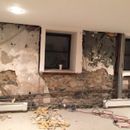Best insulation for half-below / half-above finished basement?
hi all,
i’ve been reading through blogs and articles on this site and beyond (https://www.greenbuildingadvisor.com/blogs/dept/musings/how-insulate-basement-wall), etc.
i have a basement that we are finishing for bedrooms and bathrooms. one wall is attached to our neighbor, 2 walls are 3 feet in-ground, and 1 wall opens at grade. we are installing an interior french drain, with which we planned to include a vertical vapor barrier to a 3′ height (to grade).
my foundation is stone and mortar (brooklyn). i have surmised that the best insulation for me to use on that surface is closed-cell spray. HOWEVER, what do i do, given the 3′ vertical vapor barrier?
should i spray first, then apply the barrier?
thanks in advance for your thoughtful replies.
josh
GBA Detail Library
A collection of one thousand construction details organized by climate and house part










Replies
Josh,
There are several ways to do this. In general, the vapor barrier is installed first, against the stone foundation; then the closed-cell spray foam is installed on the interior side of the vapor barrier.
Some builders prefer to install a dimple mat product against the wall first, to make sure that there is a travel path for liquid water to find its way down the face of the wall to the French drain at the bottom of the wall. Other builders assert that the rubble wall will always be rough enough to provide travel paths for water.
For more information, see Joe Lstiburek's article, Rubble Foundations.
thanks martin,
a few concerns...
1) the vapor barrier that the installer is using is rigid (it's proprietary), which is different than the more "sheet"-like materials i'm seeing. http://www.quality1stbasementsystems.com/basement-waterproofing-nj/wet-basement-products/walls/wall-vapor-barrier.html
2) the vapor barrier will only extend halfway up the wall, so i worry that the "hinge" or "break" from the top of the barrier to the upper alf of the wall might compromise the structural integrity of the spray foam.
3) i guess this means i have to clean off all the remaining platter sections that have been separating and peeling off the rubble for the past 90 years?
4) are there health hazards i should be thinking of for the spray foam? we intend to frame and cover it, but as that floor will have or bedrooms, etc., the family will be spending a lot of time down there.
thanks. i really value experts who are NOT salespeople chiming in on this!
josh
Josh,
The page you linked to -- the one describing a basement finishing system that includes a poorly described "vapor barrier" -- leaves a lot to be desired. It doesn't mention water management or insulation. The product appears to be some type of finished panel that serves as an interior finished wall, but the web site provides few details.
Needless to day, I would ask questions if a contractor proposed a material that is poorly described on the contractor's web site (or the material supplier's web site).
You either need to have confidence in the approach suggested by your contractor, or you need to select another contractor.